Digital Identity NZ , in partnership with NZ Tech Alliance, hosted the Digital Trust Hui event on August 1st, 2023, bringing together 150+ government, retail, and FSI identity management and security professionals across Aotearoa.
I was fortunate enough to hear some insightful sessions and meet delegates on the quest to make self-sovereign identity secure and trustworthy for a democratic society. Here are the top three key takeaways in all industries, who collect data, should take into consideration:
1. Self-sovereign identity education
Self-sovereign identity (SSI) is an innovative approach to digital identity that empowers individuals to control their personal information securely and privately. In our modern interconnected world, where data breaches and identity theft are prevalent, educating the community about SSI is crucial. The first step in this process is to raise awareness about the concept of SSI and its potential benefits. International keynote speaker Victor Dominello proclaimed that, “Education is needed for the community to protect their identity, and they need to come on the journey”.
Empowering citizens ensures that individuals can selectively share specific information with different service providers without compromising their overall identity. Such control over personal data reduces the risk of identity theft and misuse of sensitive information, enhancing online safety for all.
Providing all generations from “cradle to grave” with knowledge about their digital identity rights and SSI principles can have a long-lasting impact on their online behaviors and practices. And this, in return, can help build trust and ensure the opposite perception of the “big brother” syndrome.
2. Rolling out the “red carpet”
In this remote-first era, companies worldwide are transitioning their services to digital platforms to enhance efficiency, accessibility, and convenience for citizens. This digital transformation, however, comes with its challenges, particularly for those who might not be technologically savvy or lack access to the required infrastructure. To make this transition successful, it’s essential to roll out the “red carpet” for digital services, especially when it comes to identity verification to access services like working with children, police checks, and social services in the public sector.
One of the critical aspects of the “red-carpet treatment” is user-friendly and intuitive interfaces. Digital platforms should be designed with UX as a top priority. The layout should be simple, navigation should be easy, and information should be presented in a clear and understandable manner. By eliminating unnecessary complexities, citizens can easily access the services they need without frustration. And this includes “why” we give out our identifiable information, and for “what”.
Data security and privacy are paramount when dealing with government services; citizens must be assured that their personal information is handled securely and transparently. Implementing robust data protection measures, such as encryption and multi-factor authentication, can instil trust in users, encouraging them to use digital services confidently.
3. Accessible IDV for everyone
From banking to employment to insurance, identity verification technology is the modern world’s gatekeeper. Systems underpinned by artificial intelligence (AI) and machine learning (ML) now control access to a diverse range of services, offering the potential to reduce onboarding friction and enhance the customer journey.
Yet certain aspects of digital identity systems, if poorly designed, can mean that not every customer has a fair and equitable experience. Ensuring that biometric and document verification technologies work effectively for users regardless of race, ethnicity, sex, gender identity, age, national origin, or disability is essential for modern businesses.
The quest for Zero Bias AI in IDV
AI has emerged as a great tool to prevent fraud in the assistance of IDV. As identity professionals looking ahead to the future, we must prioritise inclusion and building identity systems that work for everyone. Ensuring that biometric and document verification technologies work effectively for all users is essential for modern businesses.
Paul Warren-Tape, IDVerse’s GM for the APAC region, led a session on “The Intersection Between Human, Ethics, and AI” that highlighted that we must overcome 4 key areas of bias:
System bias
If an identity verification (IDV) solution only works on the latest smartphone model with a superior camera spec or with a high-speed internet connection, then any users who do not meet these requirements will be forced to rely on manual methods of verification or be excluded from accessing a service altogether.
Data bias
If biased data is used to train AI, it is likely the system will exhibit those same biases when making decisions. This has become the AI industry’s Achilles heel. Advancements in generative AI, also known as synthetic media, combined with ethically-sourced synthetic datasets for training shows that developers are using this tech to make their products better.
Manual screening bias
Automated identity verification systems that are available 24/7/365 and require no manual human intervention are far more inclusive to a wider customer base. For example, offering account opening services during business operating hours, when human analysts are available, excludes low-income customers who cannot afford to take time off of work, or those who work night or weekend shifts.
Language bias
It’s no secret that the onboarding process represents a major hurdle for businesses. Users are prepared to drop off if this stage is too difficult or can’t be completed. Removing the barriers that prevent users from comprehending the actions they need to successfully advance through each stage will require catering to a range of accessibility needs.
IDV solutions which support more writing systems, more languages, and more document types will allow businesses to reach more customers. In short, the quest for Zero Bias AI in IDV is for anyone, anywhere, anytime.
Do you want to join the quest for Zero Bias AI?
Download the report to learn more.
About the post:
Images are generative AI-created. Prompt: An Andy Warhol style screen print array of globes. Tool: DALL-E.
About the author:
Natalie Mendes is IDVerse’s Head of Marketing for the APAC region. She oversees the company’s go-to-market plans and works closely with clients to bring IDVerse thought leaders and IDV tech to the community. Mendes has served in a variety of roles across a range of sectors including data science, analytical marketing, and advanced analytics.


